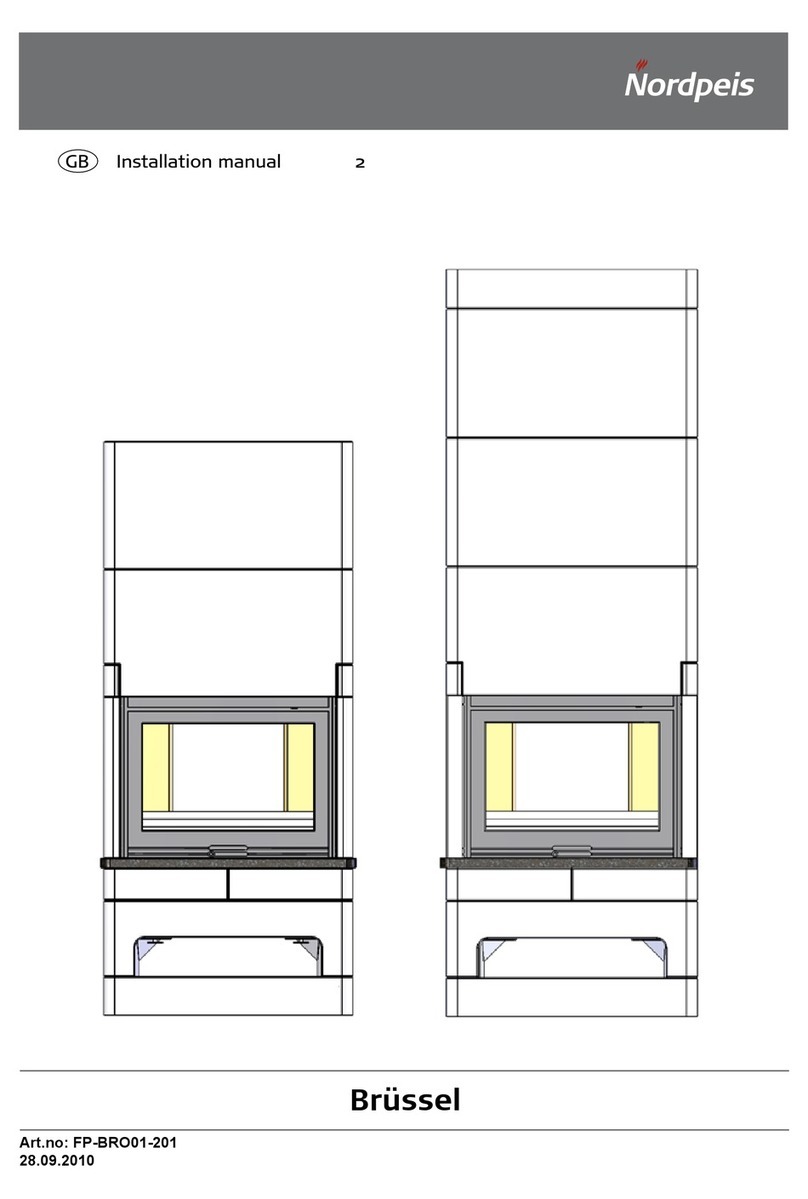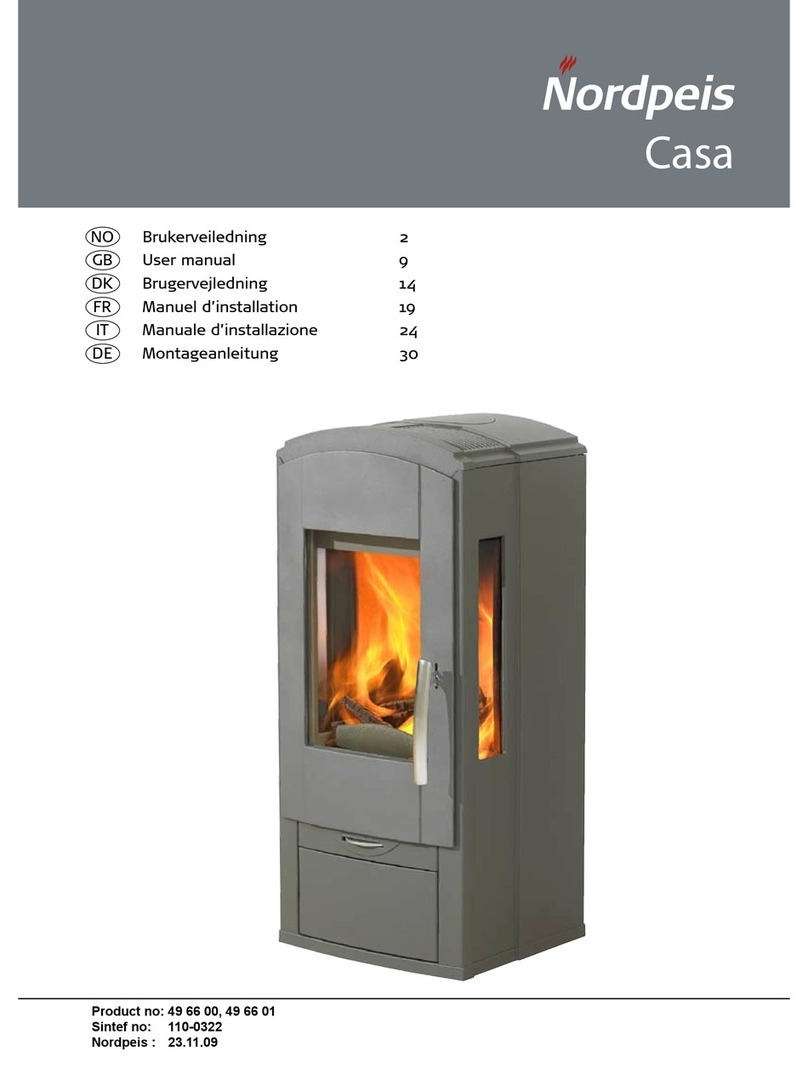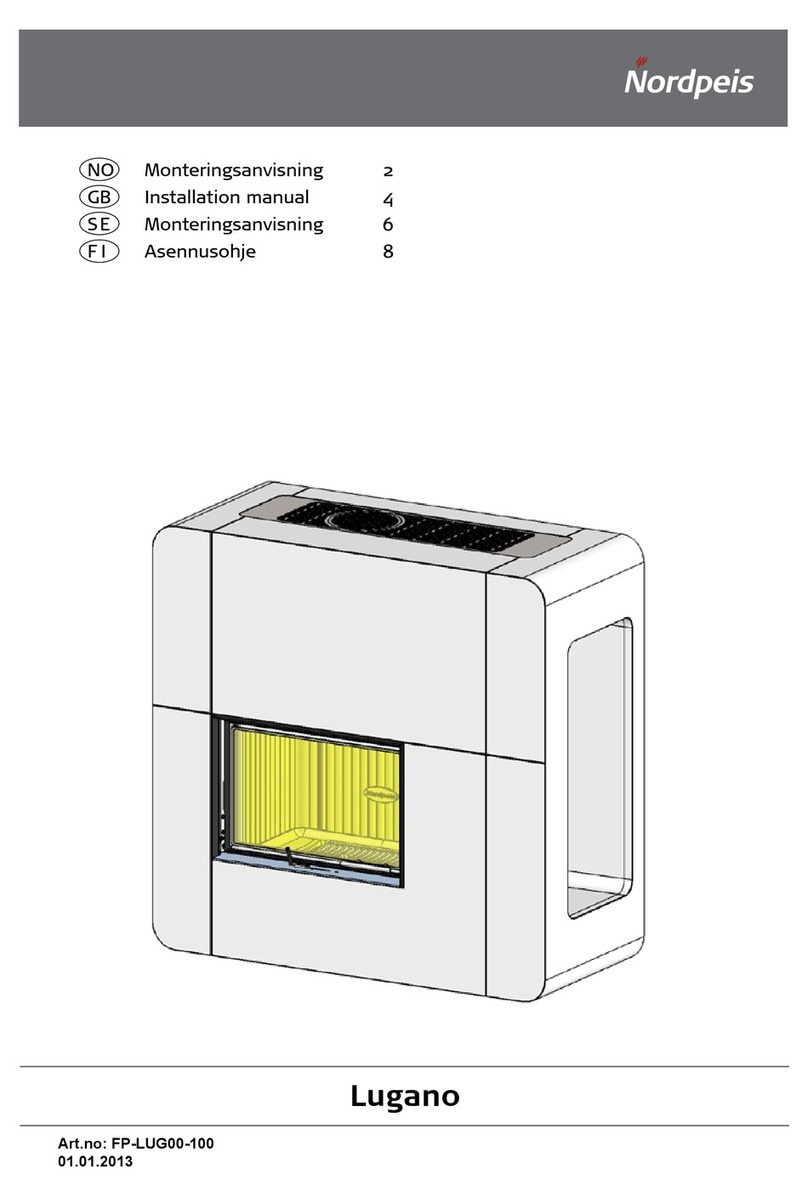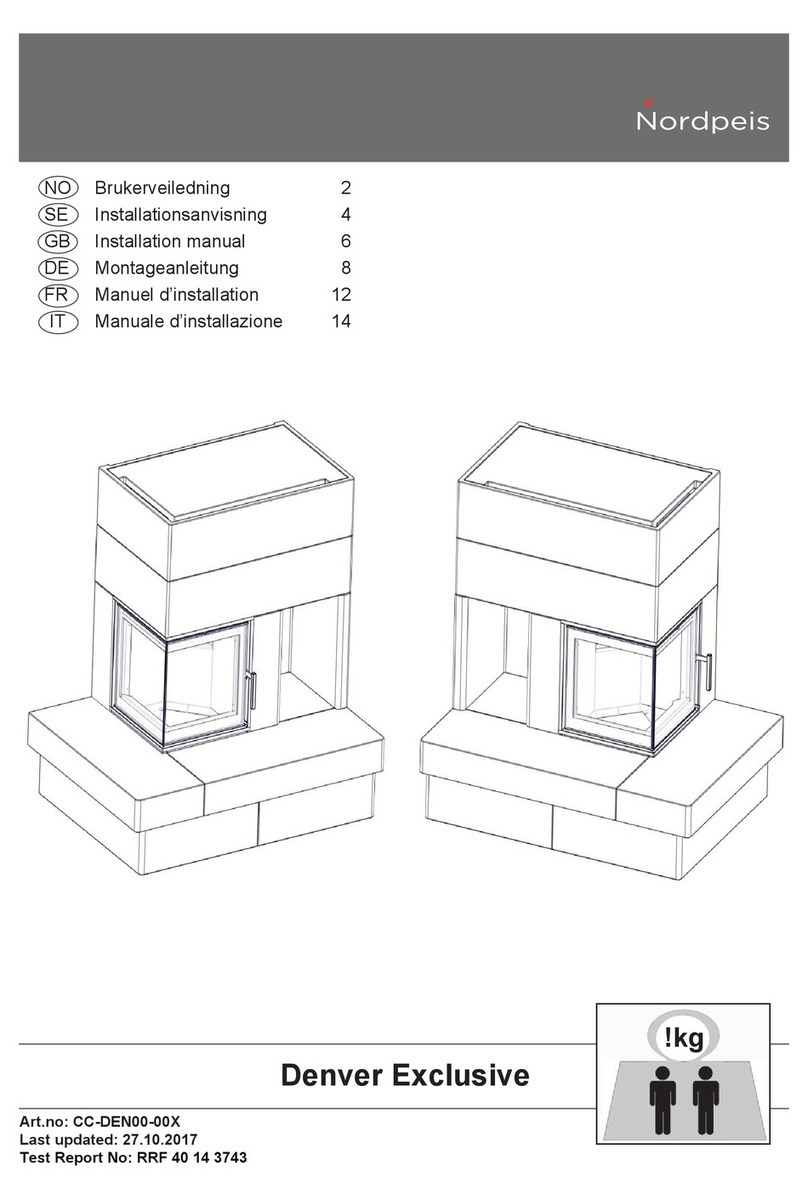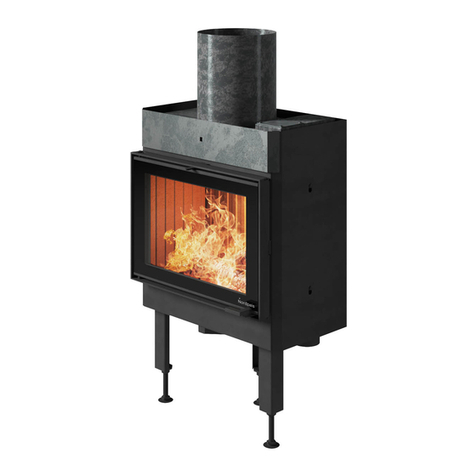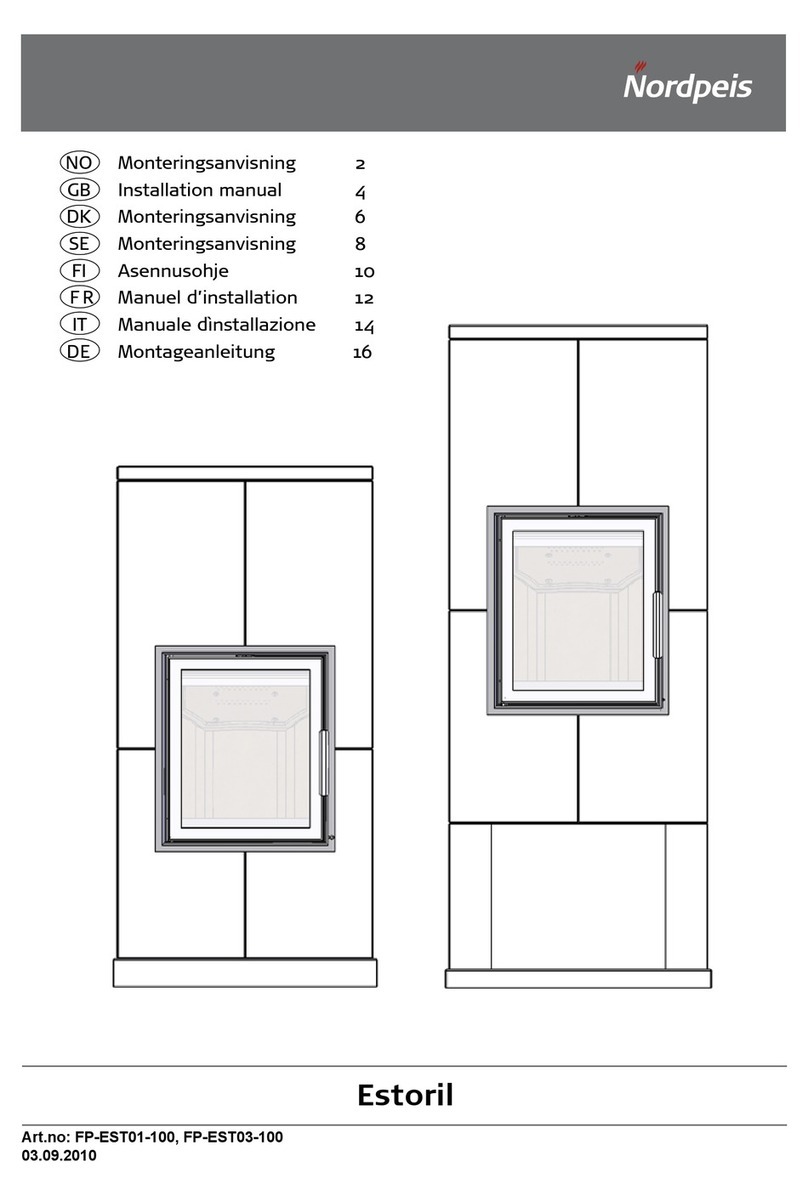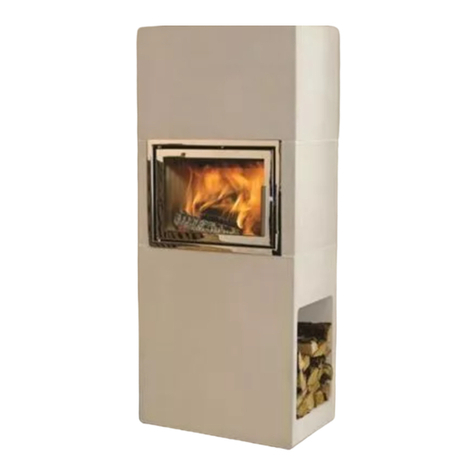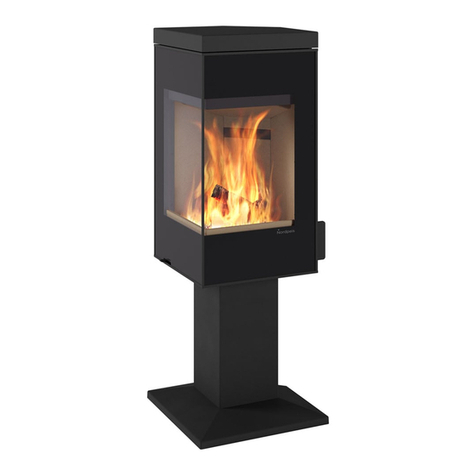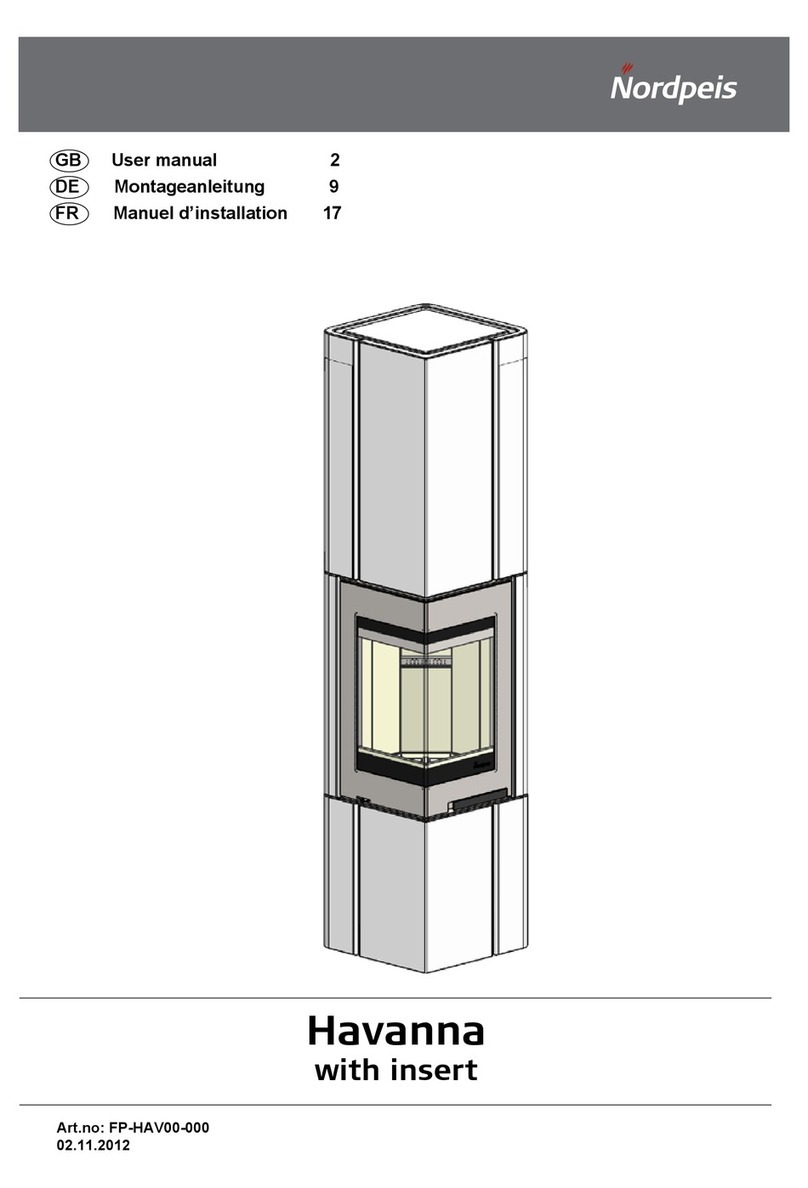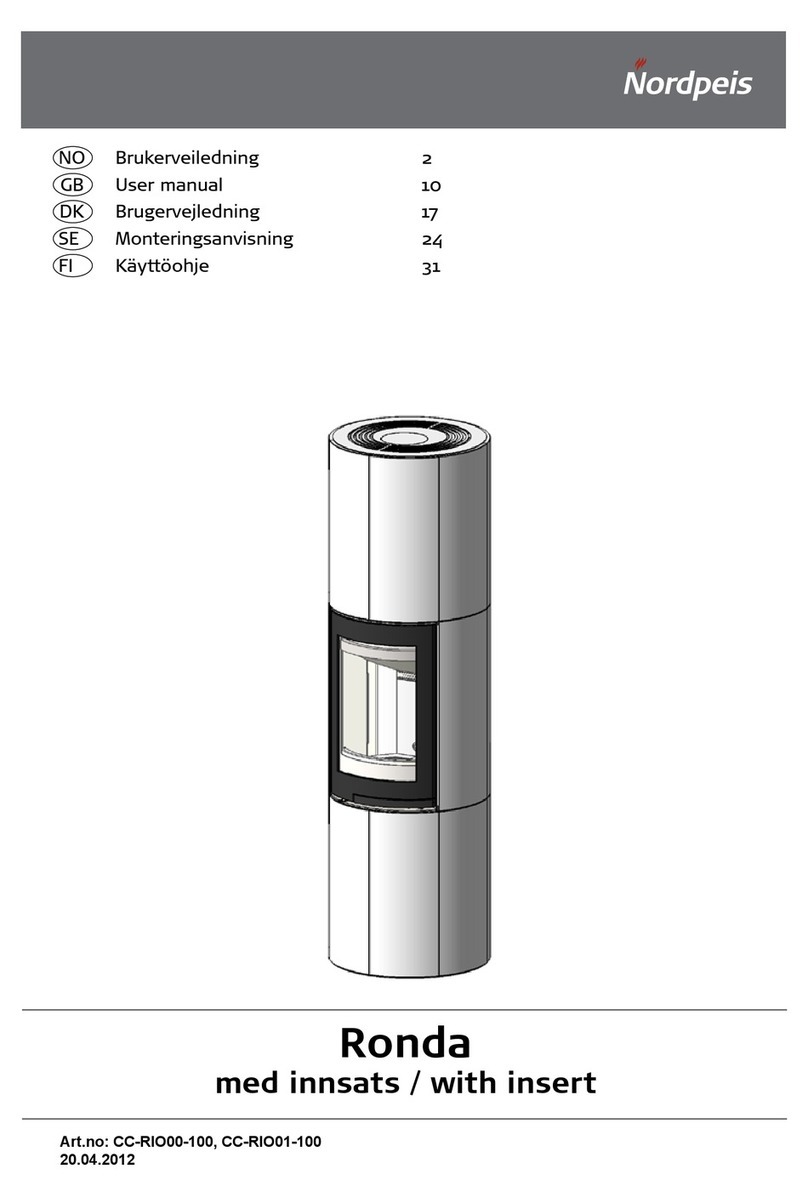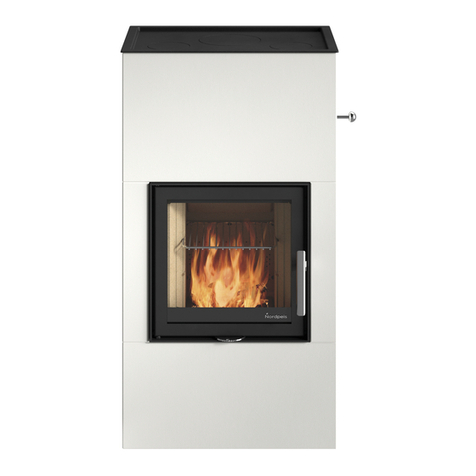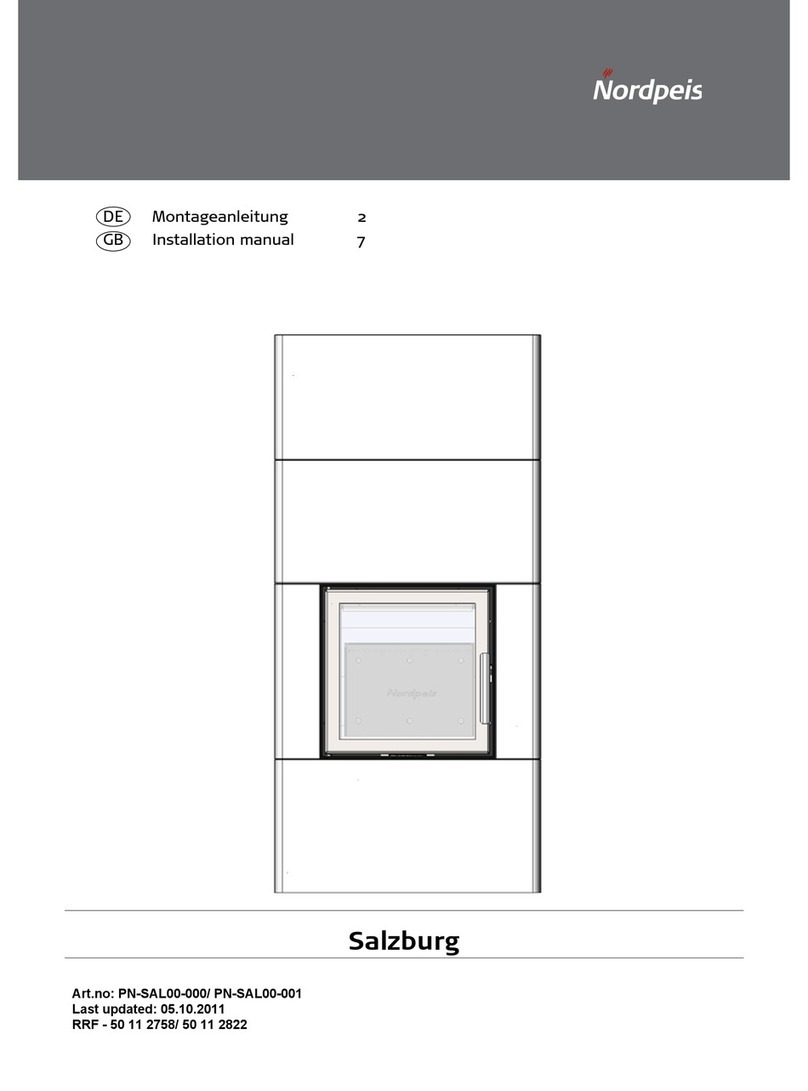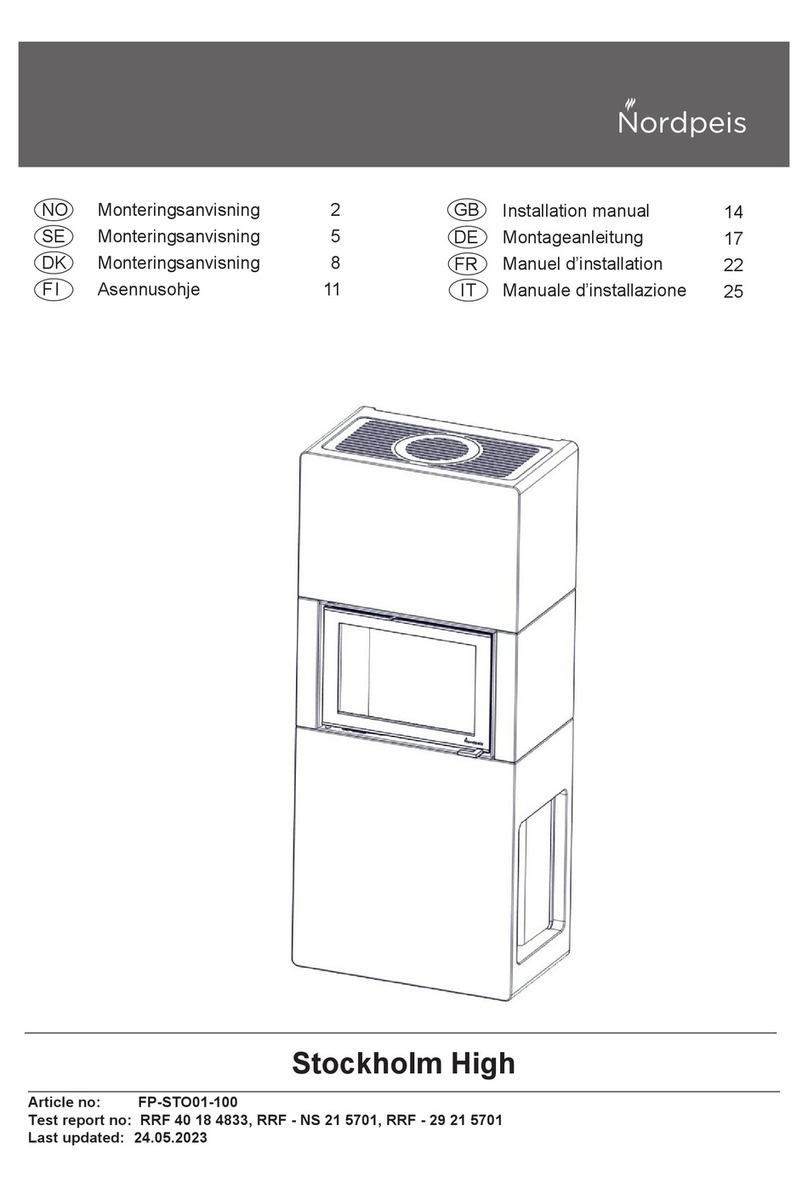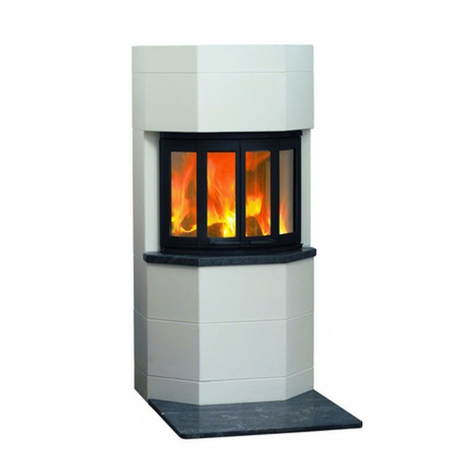
5
NO
er tett og fungerer optimalt. Disse fås kjøpt i sett med
keramisk lim inkludert.
3. Fyringstips
Fyringsrytme
Et varmelagrende produkt skal ikke overfyres da
dette kan gi skader på produktet. For å utnytte et
varmelagrende produkt maksimalt er det derfor viktig å
optimalisere fyringsrytmen og hvor store ileggene skal
være. Les hvilke fyringsintervaller og ileggstrørrelser
som gjelder for ditt produkt.
Den beste måten å tenne opp et ildsted er ved bruk av
opptenningsbriketter og kløyvet, tørr småved. Aviser gir
mye aske og trykksverten er ikke bra for miljøet.
Reklamer, magasiner, melkekartonger og lignende er
ikke egnet for opptenning i peis. Det er viktig med god
lufttilførsel ved opptenning. Når skorsteinen blir varm
øker trekken og døren kan lukkes
Advarsel!
Bruk ALDRI opptenningsvæske som bensin,
paran, rødsprit eller lignende til opptenning.
Du kan skade både deg selv
og produktet.
Bruk alltid ren og tørr ved med et maksimalt fuktinnhold
på 20% / min. 16%. Fuktig ved krever mye luft til
forbrenningen og det må brukes ekstra energi/varme til
å tørke ut det fuktige treet. Dette gir mindre
varmeavgivelse til omgivelsene samtidig som det fører
til sotdannelse på glasset og i skorsteinen, med fare for
beksot og skorsteinsbrann.
Lagring av ved
For å forsikre seg om at veden er tørr, bør treet
felles om vinteren og lagres om sommeren under tak
på et sted med god utlufting. Vedstabelen må aldri
dekkes av en presenning som ligger mot jorden, da
presenningen vil fungere som et tett lokk som vil
forhindre veden i å tørke. Oppbevar alltid en mindre
mengde ved innendørs i noen dager før bruk, slik at
fukten i overaten på veden kan fordampe.
Fyring
For lite luft til ildstedet kan medføre at glasset sotes.
Tilfør derfor luft til bålet like etter at brenselet er lagt
på, slik at det er ammer i brennkammeret og gassene
forbrennes. Åpne opptennings-/fyringsventilen og ha
døren litt på gløtt til ammene får godt tak.
Advarsel!
For å unngå brannskader, må du være oppmerk-
som på at alle overater kan bli varme under bruk.
Skulle pipebrann oppstå, lukk døren og
lutilførselen til ildstedet, ring så brannvesenet. Et-
ter en pipebrann skal fyringsannlegget besiktiges
og godkjennes av brann og feievesenet.
Merk at lufttilførsel til forbrenningen også kan bli for
stor og gi en ukontrollerbar amme som svært raskt vil
varme opp hele ildstedet til en ekstremt høy temperatur
(gjelder fyring med lukket, eller nesten lukket dør). Fyll
derfor aldri brennkammeret helt opp med ved.
Opptenning
Optenningsved
Fin kløyvd (diameter of 3-5cm)
Lengde: <40 cm
Ca. mengde : 2,3 kg
Plasser luftventil kontrollen i opptenningsstilling,
med å ytte den helt til høyre. Sett spjeldet i
opptenningsmodus ved å trekke spaken helt ut.
Legg i den n kløyvde veden og tenn opp. Se til at
ammene har tatt godt tak i veden. Når ammene er
stabile og pipen er blitt varm, kan luftjustringshjulet tas
ut av sin stilling for opptenning med å vri den til venstre,
når et klikk høres eller kjennes, er opptenningsluften
stengt.
Etter 15-20 minutter fra opptenning kan også spjeldet
settes i driftsposisjon ved å trykke det havveis inn.
Røyk begynner da og sirkulere i kanalene og varmen
fra denne vil overføres og lagres i Powerstone kjernen.
Når verden er brent ned til glør, kan ny ved legges
inn. Mens døren er åpen settes også spjeldet i
opptenningsmodus. Dra eksisterende glør frem i
forbrenningskammeret når du legger i ny ved for at
ny ved lettest skal tenne. Plasser første lag med ved
vinkelrett fra fronten. Det skal brenne livlig.
Påfyllingsmengde
Kløyvd ved (diametre 6-9cm)
Lengde: <40 cm
Ca. mengde. 2,3 kg /h
Når bålet er slukket, steng skorsteinsspjeldet for å lagre
varmen i ildstedet.
Valg av brensel
Alle typer tre, som bjørk, bøk, eik, alm, ask og frukttre
kan brukes som brensel i ildstedet. Tresorter har
forskjellige hardhetsgrader - jo høyere hardhetsgrad
veden har, desto høyere er energiverdien. Bøk, eik og
bjørk har den høyeste hardhetsgraden.
NB! Vi anbefaler ikke bruk av fyringsbriketter/kompakt-
ved i våre brennkamre, da disse produktene kan utvikle
vesentlig høyere temperatur enn brennkammeret tåler.
Fyringsbriketter/kompaktved anvendes på eget ansvar
og kan føre til at garantien bortfaller.
Advarsel! Døren til brennkammeret skal alltid
være stengt. Unntatt under opptenning, nytt illegg
og ved fjerning av aske.
